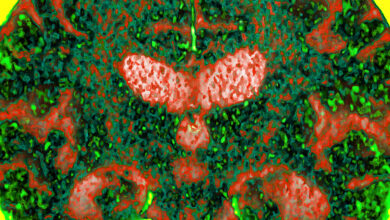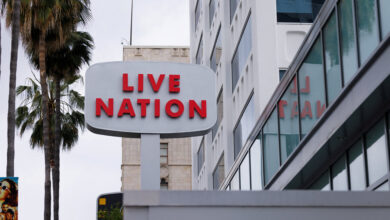Strasbourg for Book Lovers – The New York Times

Attention, bibliophiles: Put Strasbourg, the largest city in eastern France, on your radar. Once home to the godfather of publishing — the 15th-century printing-press pioneer Johannes Gutenberg — the city is the UNESCO World Book Capital for 2024. Through next April, more than 200 events and activities will take place in and around Strasbourg, a polyglot city on the German border whose half-timbered gingerbread houses, gabled roofs, picturesque canals and church spires seem to have sprung from a storybook of their own.
Among the events are exhibitions devoted to Gustave Doré — a Strasbourg native and perhaps the 19th-century’s most celebrated illustrator of literary works — and Julie Doucet, a groundbreaking Quebec graphic novelist and visual artist. The annual Fête des Imprimeurs on June 29 and 30 in Place Gutenberg will showcase all of the trades involved in bookmaking, including through interactive workshops.
But the UNESCO events aren’t the only reasons to visit. Strasbourg has many spots for the literary-minded that are permanent fixtures, from comic shops and indie book emporiums to historical libraries and antiquarian specialists. Here are six favorites.
Place Gutenberg: The story begins
A native of Mainz, Germany (about 100 miles away), Gutenberg lived in Strasbourg in the 1430s and 1440s, developing the initial plans for his revolutionary moveable-type printing press, which would come to fruition in Mainz in the 1450s.
To honor him, Strasbourg in 1840 erected a statue in a square near the city’s red sandstone cathedral, whose Gothic design another German visitor, Johann Wolfgang von Goethe, famously rhapsodized about. (The future literary star studied in Strasbourg in the early 1770s, living nearby at 36 rue du Vieux-Marché-aux-Poissons.)
The stone statue shows Gutenberg, bearded and solemn, holding a page bearing the French words “Et la lumière fut”—“And there was light” — a reference both to his famous Bibles and to the enlightenment of humankind made possible by the spread of printed matter.
On Tuesdays, Thursdays and Saturdays, some of the fruits of Gutenberg’s invention — used books and historical prints — go on sale nearby during the open-air book market along rue des Hallebardes, just across the street.
Fairy tales and fountain pens
The smells of leather, parchment and dust suffuse La Jument Verte, an antiquarian book shop along rue des Juifs, one of the streets near the cathedral where some of Europe’s earliest print shops once operated.
Sun-filled and cheerful, the store has extensive holdings in French-language works of history, science and medicine, including an 1863 Paris travel guide (€80, or about $87) and an 1870 surgical primer (€200). Literary works are another specialty. If you don’t have €50,000 for the first six volumes of the original 1668 edition of La Fontaine’s fables, a pillar of French literature, a six-volume set of “The Divine Comedy,” with illustrations by Salvador Dalí, costs a mere €5,800.
If you feel inspired to do some sketching or scrawling afterward, the city’s most elegant stationery store is steps away: Monogram. Don’t miss the display cases filled with handcrafted Namiki-brand fountain pens from Japan. Each is an individual artwork embellished with gold dust and lacquer (€1,580 to €2,850). Less extravagant items also abound, including rustic leather-bound notebooks by Lamali (65 euros) and scads of greeting cards, wrapping paper and bookmarks.
Surrealism, satire and more
An extensive collection of historical works can be perused — for free — in the soaring, airy library of the Strasbourg Museum of Modern and Contemporary Art, a repository of about 140,000 books, magazines, museum catalogs and other materials.
Want to flip through the original proclamations of the Dadaist movement? Just ask. Published in 1918 in the Zurich-based group’s Dada magazine, the poet Tristan Tzara’s so-called Dada Manifesto (written in French) still amazes with its absurdist tone, nonsensical language, inventive syntax and gleeful vulgarity as it mocks literature, art, language and authority.
The periodicals archive includes famous titles related to Surrealism (Minotaure), German art (Deutsche Kunst und Dekoration), French satire (Le Charivari) and photography (Nouvelle Vision). A maze of shelves packed with mostly French books on a gamut of subjects — from art history and architecture to ceramics and graphic design — rounds out the offerings.
If you’re looking for something to take home, the museum bookshop down the hall contains a smattering of English-language gems, from “Dan Graham’s New Jersey” (€45) to “Young, Gifted and Black: A New Generation of Artists” (€50).
A stream of words
The award for homiest bookshop goes to L’Oiseau Rare (the Rare Bird), a small, cozy hangout in a half-timbered yellow house from the 1600s. It’s one of a trio of bookstores along Quai des Bateliers, a lovely, tree-lined canalside walkway that could easily be renamed Readers’ Row.
Outfitted with a three-table cafe and hung with paintings by a co-owner, Diane Albisser — whose scenes of dance halls and boxing rings take inspiration from African American history — the shop specializes in French literary works and socially activist nonfiction, particularly on feminism, race and the environment. You can walk in for a café au lait (€3.80) and stroll out with novels by Françoise Sagan, a dual-language edition of Maya Angelou’s poetry, and tracts by Mary Shelley translated into the language of Molière.
Down the quay, in another half-timbered house, Le Tigre bursts with French-language comics, manga, graphic novels and other illustrated works. Wordless treats also abound, from pop-culture figurines (the Notorious B.I.G., Grandpa Munster; €25) to vintage vinyl albums (€15 to €20) by David Bowie, Bud Powell and other heavyweights of rock and jazz.
Things suddenly get dark inside La Tache Noire (The Black Stain), a shrine for worshipers of crime novels from China, India, Iceland, Mexico, Belgium, France and other far-flung nations. Nearly everything is in French, though a section of American and British Hall-of-Famers, from Raymond Chandler to James Ellroy, caters to Anglophones.
Central Vapeur: Postcards from the fringe
The location of Central Vapeur, an arts organization devoted to alternative illustration, graphics and comics, is apt. Occupying a warehouse in a semi-blighted industrial zone, the group’s headquarters sits on the geographical edge of Strasbourg, and its tiny bookstore is similarly filled with visions and voices from the fringe.
Within, a pipe-smoking cartoon elephant in striped trousers looks on from a tote bag (€8). A pink-eyed skull covered with birthday candles peers from a tiny round lapel button (€1.50). Donald Trump, biting into a drippy scoop of ice cream resembling Earth, grimaces at the world from a wall poster (€40). Offbeat drawings, postcards and prints also decorate the shop.
In addition to graphic novels from local authors, the store’s offerings include dual-language French-English design magazines like Cercle (published in Strasbourg; €22) and Back Office (a periodical based in Paris; €20).
And if you’re up for a festival, the organization hosts Format(s), which celebrates French and international graphic design.
Place Kléber: A multilingual mecca
Even if Strasbourg’s grandest, liveliest square didn’t have a thrice-weekly vintage book market (Tuesday, Thursday and Saturday), an emporium of Japanese comics (Le Camphrier), or a megastore of French-language books (Librarie Kléber), it would still be an obligatory stop thanks to the globe-spinning Librarie du Monde Entier. Poetic translation: The Whole Earth Bookstore.
Desperate to find a guide to conversation in Basque? Look no further. A Danish edition of “The Handmaid’s Tale”? Ditto. Urdu dictionaries, contemporary Turkish novels, Russian storybooks for kids — all in their original language? They’re all here. Dual-language books also abound, from Italian-English versions of Machiavelli’s “The Prince” to French-English editions of the experimental French classic “Zazie dans le Métro.”
The most robust offerings are in English-language fiction, history, biography and current affairs. You might even find a remaindered edition (€6) of “84, Charing Cross Road,” Helene Hanff’s charming collection of letters about the book trade. As she writes, “Buying a book you’ve never read is like buying a dress you’ve never tried on.” So always take the time to browse.
Follow New York Times Travel on Instagram and sign up for our weekly Travel Dispatch newsletter to get expert tips on traveling smarter and inspiration for your next vacation. Dreaming up a future getaway or just armchair traveling? Check out our 52 Places to Go in 2024.



